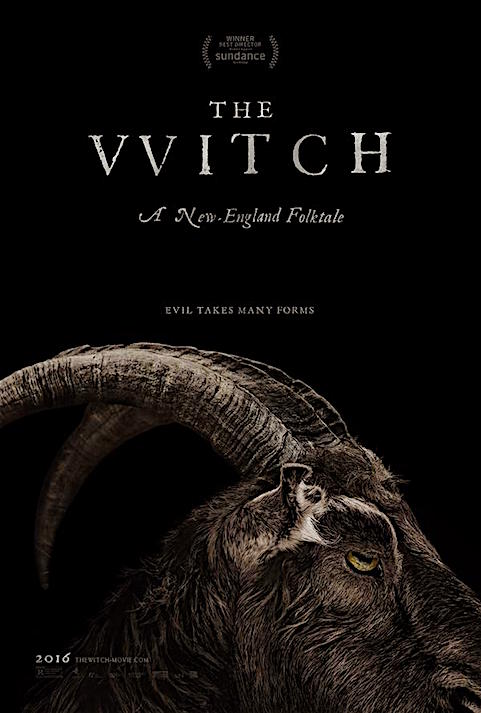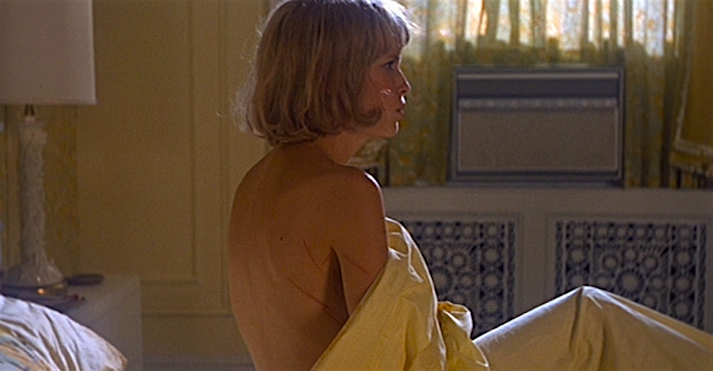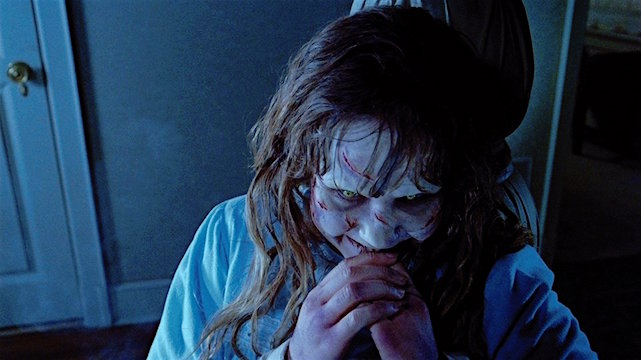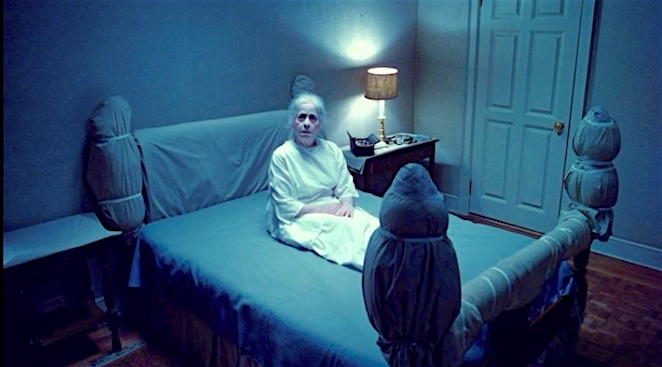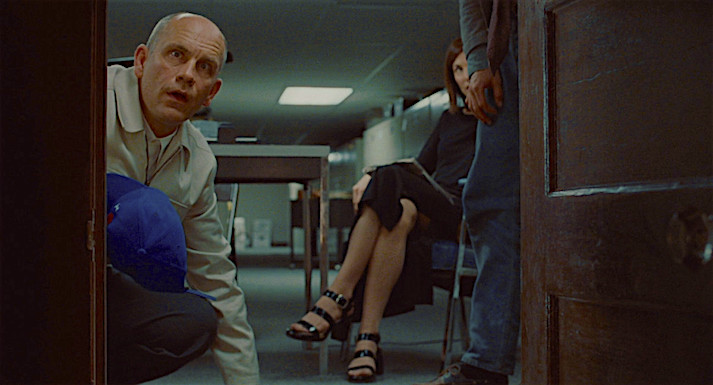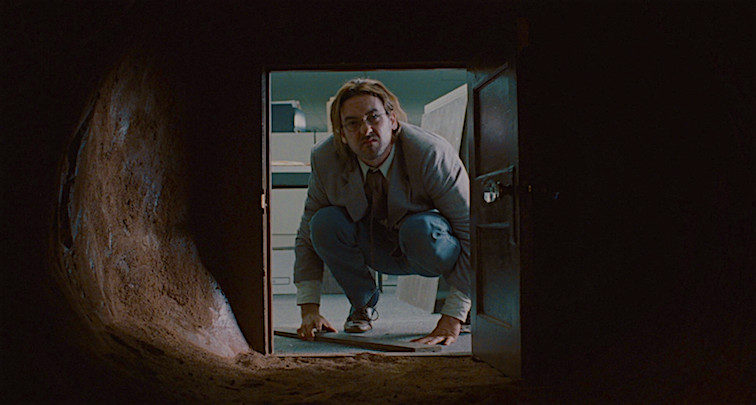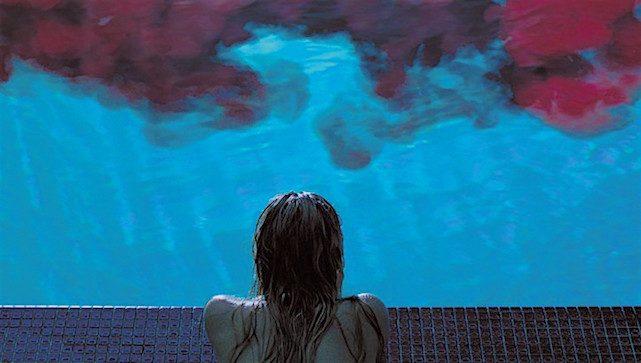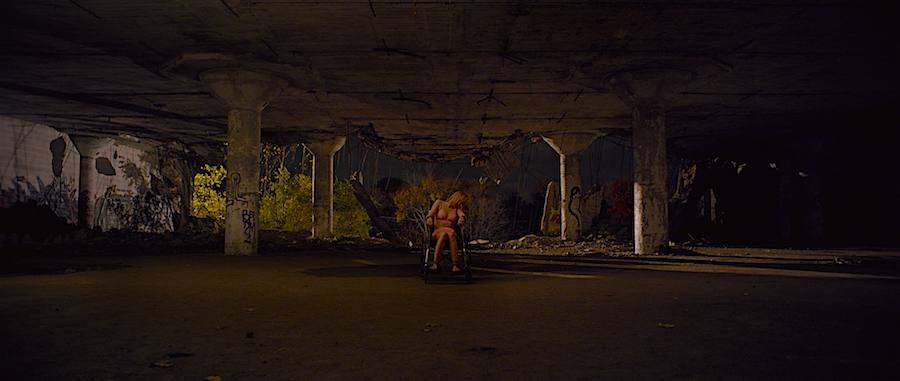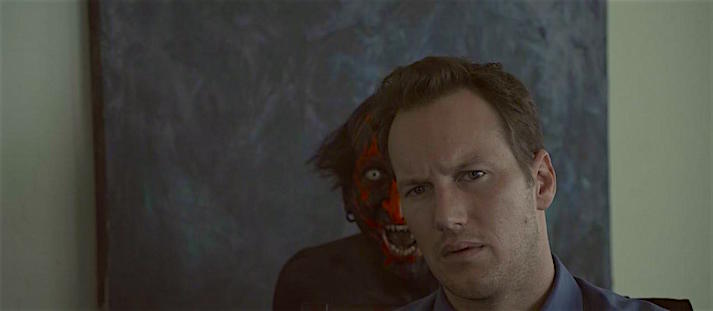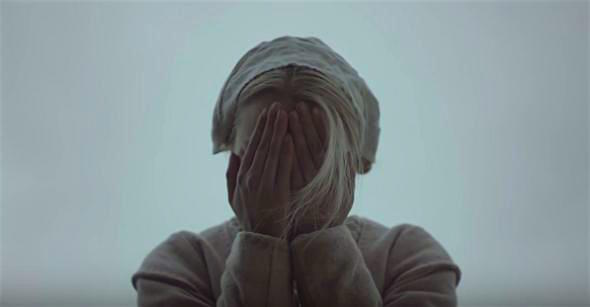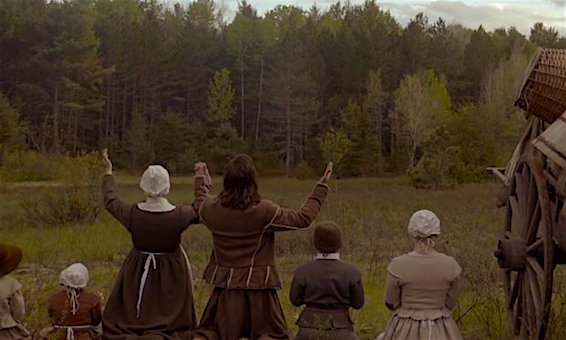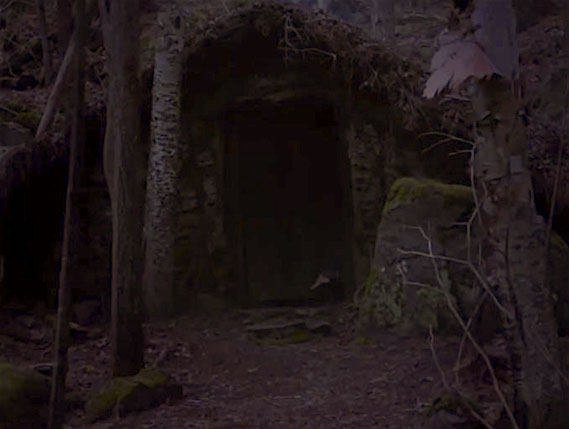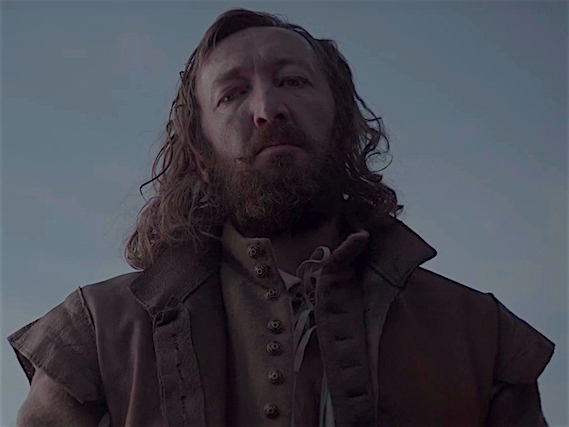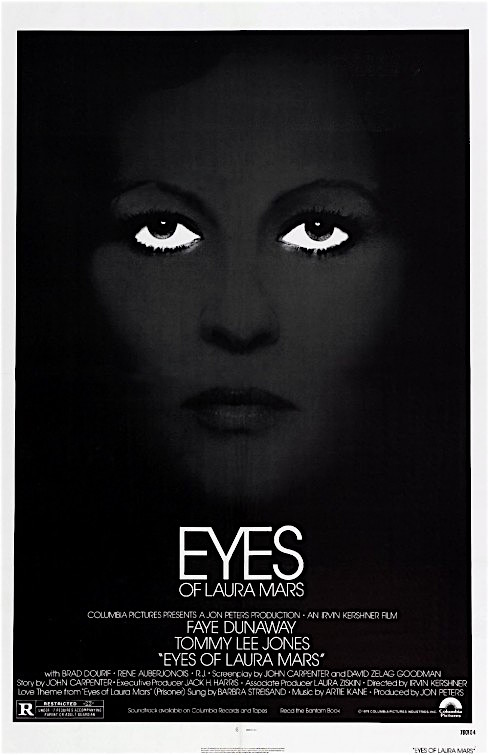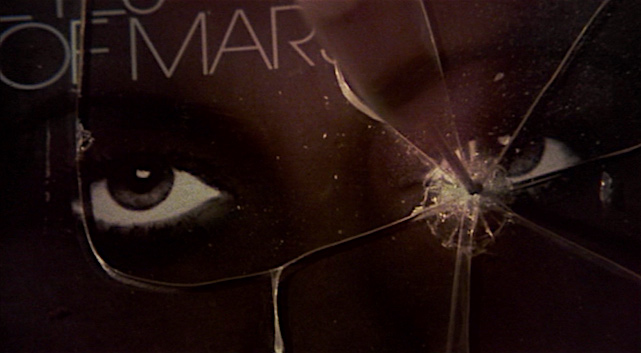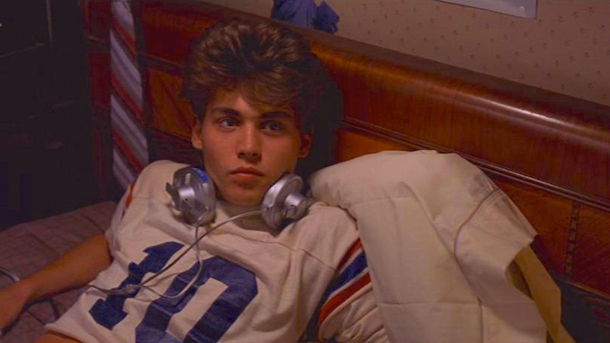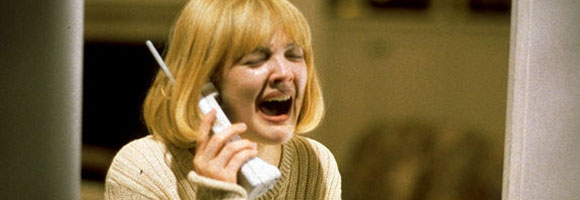When the infamous Vincent Canby reviewed Fellini’s Casanova he spent some time praising what he saw. It almost feels as though he wanted to like flawed movie, but as he reached his closing summation he issued a frustrated dismissal:
“The production is gigantic, but the ideas and feelings are small. One longs to go home and listen to Mozart’s “Don Giovanni.” — Vincent Canby, New York Times, 1977
Mr. Canby was not alone. Even Woody Allen seemed to take a stab at the film. As Alvy and Annie Hall wait in a cinema ticket holders line, they are forced to listen to a pretentious fellow film-goer rant about the Federico Fellini’s latest self-Indulgence. The latest work was Fellini’s Casanova. I suppose one could argue that Mr. Allen disagreed as he magically pulls Marshall McLuhan into frame. Alvy has the enjoyment of seeing the esteemed media philosopher bring the pompous jerk down to size. Alvy‘s contempt for this cinephile has more to do with forcing his opinions on everyone around him. No defense is made for Fellini’s Casanova. It is doubtful that the narrator and that film’s title character would find much in Fellini’s adaptation of Giacomo Casanova’s Storia della mia vita or The Story of My Life. The doomed movie simply serves as a jumping point for a great comic bit.

“What I wouldn’t give for a large sock with horse manure in it!”
Annie Hall
Woody Allen, 1977
Cinematography | Gordon Willis
Vincent Canby’s review of the then long delayed Italian production was a fair and astute critique. If you are familiar with Canby’s style of criticism — he gives the movie a thumbs down, but also manages to praise more than a little of what he saw unspool on the screen. This is not something he was prone to do.
I’m not an expert on Federico Fellini, but I have had reason to watch this film quite a bit in the last two years. In that time I have also researched a good deal regarding the troubled production of Le Casanova de Fellini. As the genius mind often does, the great filmmaker had become obsessed with translating Casanova’s memoirs. His obsession had nothing to do with Casanova. He was fascinated by a man whom he considered to be an evil character.
As Fellini’s film well charts, Casanova did not love. The existence of his being relied upon sexual encounters with no connection to the objects of his interests. Interests would be the best way to term it. Fellini’s Casanova does not even really lust. It was only after shooting began that Fellini began to feel a level of empathy towards his title character. It would be this change of heart regarding his Casanova that would end up framing the entire film.
The production began with a fundamental problem. His key financier, Alberto Grimaldi, had some very strong opinions about who would play Casanova. These two iconic figures of European Cinema entered into a battle of the wills. Grimaldi insisted that Fellini cast one of several major movie stars of the era: Brando, Redford, Newman or Pacino. Eventually Grimaldi gave in a bit and suggested Michael Caine. It is interesting that the producer even attempted to reign-in the auteur.
Fellini could never be reigned in. He got his way. He cast Donald Sutherland in the role. It was a bit of an odd choice, but it makes sense. Mr. Sutherland was a solid movie star, but not at the titan level of Grimaldi’s suggestion. He knew that Sutherland was a true actor and he also knew that he would not need to wrestle with the typical American Movie Star Ego. Fellini also saw a sadness in the deeply skilled actor. Sutherland’s casual approach also seemed to offer a sort of open canvas upon which he could paint. Or to be more precise — Sutherland was a tall thin form he intended to sculpt.

Donald Sutherland Re-Imagined…
Fellini’s Casanova
Federico Fellini, 1976
Cinematography | Giuseppe Rotunno
Fellini put his star through the paces, but Sutherland was stellar and did all and more than was needed. Fellini had hired him to play an unlikable and hopelessly alienated man. Before and when the shooting began Federico Fellini held the character in contempt. He had Sutherland’s head half shaven, applied a prosthetic nose, chin and other odd distortions served totally re-shape Sutherland. The actor looks the same from every angle. His face and being have been largely restricted. Often the only English speaker in front of the camera, he was not always able to communicate effectively. His eyes are really all he had to utilize on his own. At times it feels as if Sutherland is little more than a puppet with Fellini orchestrating his every move. Surprisingly this restrictive appearance serves Fellini’s purpose effectively, but not well enough to distinguish Sutherland as an essential player within the film.
The film was shot under extremely tight supervision and behind the closed gates of Rome’s Cinecittà Studios. Nothing about this film looks real. Quite the opposite, the entire movie feels like a gorgeous formation of a nightmare. Cold, barren and yet full of things to look at — Fellini’s Casanova is even more obscure than the far superior Fellini Satyricon. This is Surrealism to the infinite. As one expects, every actor on the screen is interesting to study. As is often the case with later Fellini, the grotesque is magnified. The movie is as much perversely disturbing as it is often stunningly beautiful. Anyone who doubts that Fellini was not calling and insisting on every single choice can be satisfied to discover that he had an articulated explanation for every aspect of the movie.
If one wonders why the production design suddenly replaces actual water with black garbage bags, Fellini had demanded this odd choice to his esteemed Production Designer/Art Director/Costume Designer, Danilo Donati. The director chose to replace water with plastic garbage bags to serve as a metaphor for Casanova’s fraudulent identity and fruitless self-journey. Fellini knew exactly what he wanted and refused any level of compromise. As he was walking his actors through a key scene involving nuns, Fellini discovered a feeling of empathy for Casanova.
He quickly came up with two incredibly complex studio set ideas which changed the point of the film and would serve as cinematic bookends within which to hold the film. And these were not simple last minute decisions. They were complex and expensive. Donate and the artists at Cinecittà Studios had to continually succeed against tight deadlines. It speaks volumes for Federico Fellini that his cast, crew and the studio artisans did next to no complaining. The filmmaker was beloved and respected. Only the best work was put forward for their director. And it shows in the finished film.

Fighting the choppy sea of plastic garbage bags…
Fellini’s Casanova
Federico Fellini, 1976
Cinematography | Giuseppe Rotunno
The opening scene of Fellini’s Casanova is remarkable. An ornate and rowdy crowd assembles on the city’s banks waiting for something to emerge from the water. Impossibly complex rigs and tethers begin to pull and strain — a huge statue of Venus begins to emerge. The swelling crowed slips into jubilation as the Goddess of Love begins to peer out over the very real water. It is as if she is rising from the water as a blessing of desire, lust and love. Sadly the ropes and levers quickly buckle. The rigs and ropes snap under the strain. The giant statue promising erotic love and happiness slips forever lost to the bottom of the ocean. It is as if all hope for satisfaction and happiness has sunk. Nino Rota’s brilliant musical score adds to the potency of the visual. This is how Fellini’s Casanova begins.
It is far more than grim metaphor. The failed attempt to raise Venus out of the water is never corrected. The film ends with a striking return to the film’s early warning sign. As Casanova attempts to find some form of connection and solace, he will realize that he is standing alone on a vast area of frozen water. The peering eyes of Venus are looking up at both him. Venus’ cold eyes are forever frozen beneath the lonely womanizer’s feet. It all sounds amazing, but one needs to be aware that this is a two hour and thirty-five minute epic of calculated iciness.
A pal recently suggested that Fellini’s Casanova must be a bit like Ken Russell’s Lisztomania. But this is not a good comparison. True, Ken Russell’s highly experimental and comic-book take on everything from Franz Liszt to Richard Wagner to anti-semitism to WWII may be overtly eager, but there is sense to Russell’s unhinged film. If a person knows their history, Lisztomania is filled with an intentional goofy sort of logic that ties to the truth of the people and situations it satirizes. Ken Russell was also smart enough to keep his film under the two hour mark by twenty minutes. He keeps the pace up with the surreal actions taking place on the screen.
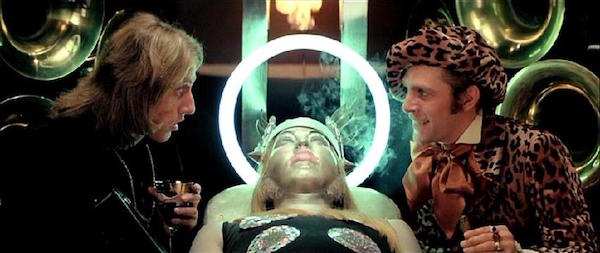
It is quite manic and strange, but there is logic to the madness…
Roger Daltrey, Rick Wakeman and Paul Nicholas ponder the horror of a Master Race…
Lisztomania
Ken Russell, 1975
Cinematography | Peter Suschitzky
Beyond the fact that both films were greeted negatively by critics and audiences, there is really very little that actually connects the two films. Lisztomania is a Surrealist’s absurd study of music composers connected to the rise of Facism presented through a Looney Tunes like lens. This interpretation is really not that far off base.
Fellini’s Casanova has no interest in history. This epic film is steadfast in its indifference to logic, time or space. The lover, his reality, his Italy and even the horrific Inquisition are not based in any realm of reality. When those support beams and ropes break and Venus sinks to the bottom of the water — so do the film’s strings to logic. Additionally, the movie is not particularly well paced. Fellini’s Casanova takes its time. However the sets, the costumes, the odd assortment of actors, Rotunno’s cinematography and Rota’s haunting score aid in the propelling motion of the gloomy plot.

A huge phallus carefully placed into frame…
Fellini’s Casanova
Federico Fellini, 1976
Cinematography | Giuseppe Rotunno
As laborious as it sometimes is, Fellini’s Casanova is visually unforgettable. I cringe as I write the following words, but as Woody Allen’s pompous ticket holder annoyingly laments, Fellini’s Casanova is painfully self-indulgent. This fact does not mean that there isn’t a great deal of value to be found in this excessive film. A couple of DVD and BluRay distributors have managed to secure limited releasing rights to this film. One even claimed to have fully restored the film to its initial flawed beauty. Those claims have yet to demonstrate any truth. However a restoration should be coming in the not too far future. When it does eventually arrive, I do think this 40+ year old film warrants owning for home viewing.
I know I’ve just criticized it fairly harshly but… Well… Um, yeah. I really do suggest purchasing a copy when it does become available. Fellini’s Casanova is a brilliant mistake!
This experimental epic failed in the 1970’s and it fails now, but not without a great deal of interest. Fellini’s Casanova is a visually stunning mess. Giuseppe Rotunno’s cinematography is even better than usual. Danilo Donati and the work of Cinecitta Studios is truly other-worldly. Incidentally, Fellini’s film flopped — but Donati won an Academy Award for the innovative costume design. Nino Rota’s score is beautiful, effective and iconic. Chances are you have heard the melody even if you’ve never seen the movie. Odd, grotesque, surreal and lovely — it is virtually impossible to look away from the screen. Even with a running time over two hours, Fellini’s Casanova is not a dull experience. It just isn’t much fun. This is a true flaw.
Fellini approaches his subject with a strong degree of hubris and judgement. Despite the perversities on display, this film is highly moralistic. The dialogue is often smartly witty, but never comical. This is another critical error. Fellini has checked his sense of humor outside the studio. There is no fun to be found within the gorgeous frames of his Casanova. As if in opposition to the dire tone is the clunky manner in which the film has been dubbed. It’s not that the voices fail to match the mouths as much as it is the intelligence runs against the film’s grain. The actors often appear to be lost within their director’s Mise-en-scène.
Donald Sutherland lumbers his way through the film. He is essentially nothing more than a sad puppet at the mercy of his filmmaker’s whim. In a strange way, Sutherland’s performance works. Though watching the film now it is hard to wonder if it wasn’t just dumb luck. Vacant, sleepy and possibly bored — his confusion plays directly into the director’s ill-advised endeavor.
It is truly vexing how Fellini has opted out of offering any rays of humor or sexiness in his translation of the infamous Seducer and supposed Lover of women. This film is not the erotic adventure you might anticipate. It is actually un-erotic. Casanova‘s libido and desire have long been lost. Fellini’s film is not just a study of an aging womanizer — it is focused on the tragic existential journey of man who has failed to connect any meaning to sexuality. In fact Fellini’s Casanova does not appear to have ever connected to anyone or anything. This is a lover who’s identity and meaning have gone limp. …both figuratively and literally.
Clearly Fellini is pointing a finger at the growing sexual revolution. It is a point not off-mark, but it is consistently made in a haze of staggering showmanship that is often so bad it works its way ’round to being somehow valid.
“A man who never speaks ill of women does not love them. For to understand them and to love them one must suffer at their hands. Then and only then can you find happiness at the lips of your beloved.” — Fellini’s Casanova
This character does not dislike women. He is simply indifferent to them. It doesn’t take long to realize his two-way street dilemma. The women do not care about Casanova either. They are only interested in his ability to sex. And sex he can. At least this is true in his youth. But the sex is presented in a dry and often disgusting manner.
I think some first time viewers make the mistake of associating this movie with the nunsploitation of the 1970’s. Do not expect that. Sure, the nuns get on the action, but Fellini has no interest in providing even a glimmer of titillation. Yes, it is visually interesting — but there is nothing remotely “naughty” here. It is intended to trouble, worry and depress. Like the bubbling sexual revolution going on just outside the film studio’s gate, Fellini’s Casanova is fucking to prove something.
Sex as sport. Sex as a game. Sex as a dare. Sex as a way to avoid. Sex as a weapon. Sex to hide the pain. Our lover fucks till he can fuck no more. The sexuality expressed in the movie feels like a harbinger of doom. With hindsight this is an interesting perspective. When Casanova finds himself in a sexual tryst with a robotic woman it is visually fascinating, but intellectually heavy-handed.

A gift of something to love for the title character…
Fellini’s Casanova
Federico Fellini, 1976
Cinematography | Giuseppe Rotunno
I find it interesting that the inclusion of this robotic doll of a woman was something Fellini dreamed up just after he began shooting. On the one hand this is a brilliant bit of story telling. Casanova is unable to connect to a living woman. Here Fellini offers him a fuck doll to end all fuck dolls, but there is a major problem. Casanova can pour his sexuality on her without any fear of rejection, failure or need to care. It is a poor choice that Fellini refuses to let up on the dreary tone. Casanova‘s tragic plight with the robotic woman could have been more clever if we were allowed to chuckle. But we are offered no relief from the gloom. Casanova‘s ice cold fuck doll feels like it might be the one thing that Casanova can love. The problem is obvious — a robotic fuck doll is unable to reciprocate love.

Doomed and slipping into the shadows…
Fellini’s Casanova
Federico Fellini, 1976
Cinematography | Giuseppe Rotunno
And here we see the simultaneously effective but disappointing cinematic bookend ending. Casanova is left spinning with his love object atop a frozen bay. Peering up at him is the drowned concrete Venus. She is simultaneously a representative for his empty life as well as a goddess who judges him.
It is impossible to deny the artistry. And while the film is too long, it really is not boring. Fellini supplies plenty of eye and ear candy. The movie also has more than its share of WTF Moments. These moments are as not off-putting as they are simply interesting. A film like this could never be made today.
And while I really do disagree with the comparison to Ken Russell’s Lisztomania, it is easy to make the connection. Each film allowed both master filmmakers to pursue their respective visions without interference or restraint. But it must be noted that Russell’s vision and purpose is never placed above the viewers watching out there in the dark cinema. Fellini opted to simply dive into his obsession. A more fitting comparison might be to Francis Ford Coppola’s ill-fated and self-financed indulgence into the movie musical, One From the Heart.

Another director’s obsession resulting in a cinematic error.
One From the Heart
Francis Ford Coppola, 1981
Cinematography | Storer / Garcia
But this is not really fair. One From the Heart is neon beautiful and features some amazing musical work from Tom Waits, but it requires true grit to sit through it. In the case of this 1981 Epic Flop, the director’s passion is dull. There is something maddeningly fascinating about Fellini’s Casanova. If you see it once, you will want to see it again. If you make it through One From the Heart you will want to demand a cookie for your effort.
It should be noted that Fellini’s infamous cinematic misstep continued to be challenged with production woes. This was in part due to Fellini’s last minute major changes of fancy but other issues came up. Much of the film was stolen and subsequently lost forever. The notorious theft was actually aimed for Pier Paolo Pasolini’s Salo or the 120 Days of Sodom. A great deal of shot footage was forever lost. This included an entire sequence involving actress Barbara Steele. She was unable to return to Italy for reshoots. Sutherland and the other actors made themselves available. Fellini’s Casanova was delayed almost two years.
When it became clear that the film was a fail Federico Fellini was crushed. It is important to note that he had considered this his finest work up to that point in his career. It is not difficult to understand how soul-draining a film’s flop can be for its maker, but there is an added measure when it happens to someone of Fellini’s abilities and stature. Fellini’s Casanova was an epic fail. But an epic fail from a cinematic master like Federico Fellini is still a masterful design. Being dull or uninteresting was simply not possible for this cinematic genius. This is a film that merits watching. And if you happen to love experimental film — you will most likely love this oddly flawed cinematic gem.
Fingers crossed that we see it arrive to DVD/BluRay in a truly restored/remastered version soon!
Matty Stanfield, 6.16.2016












